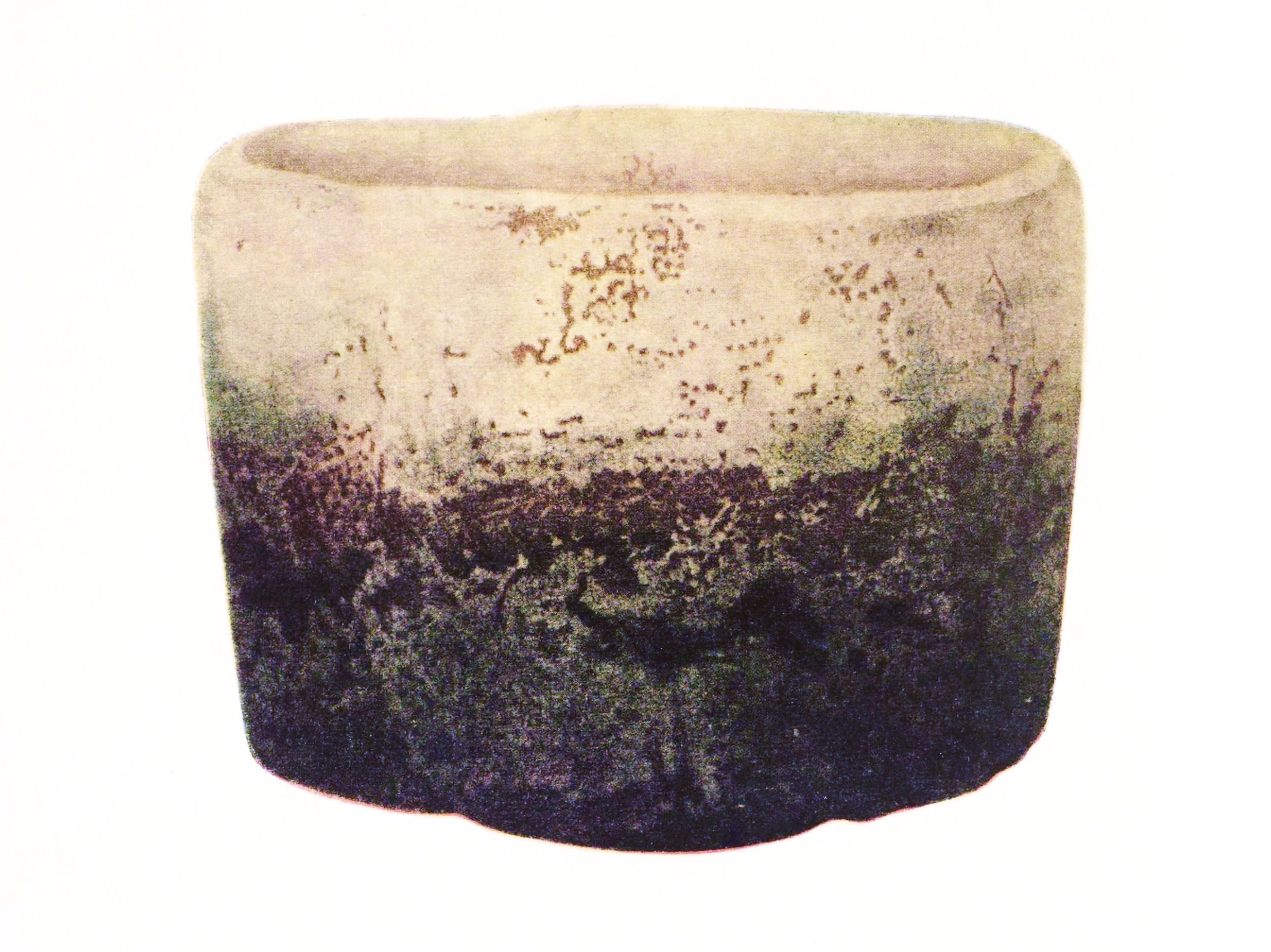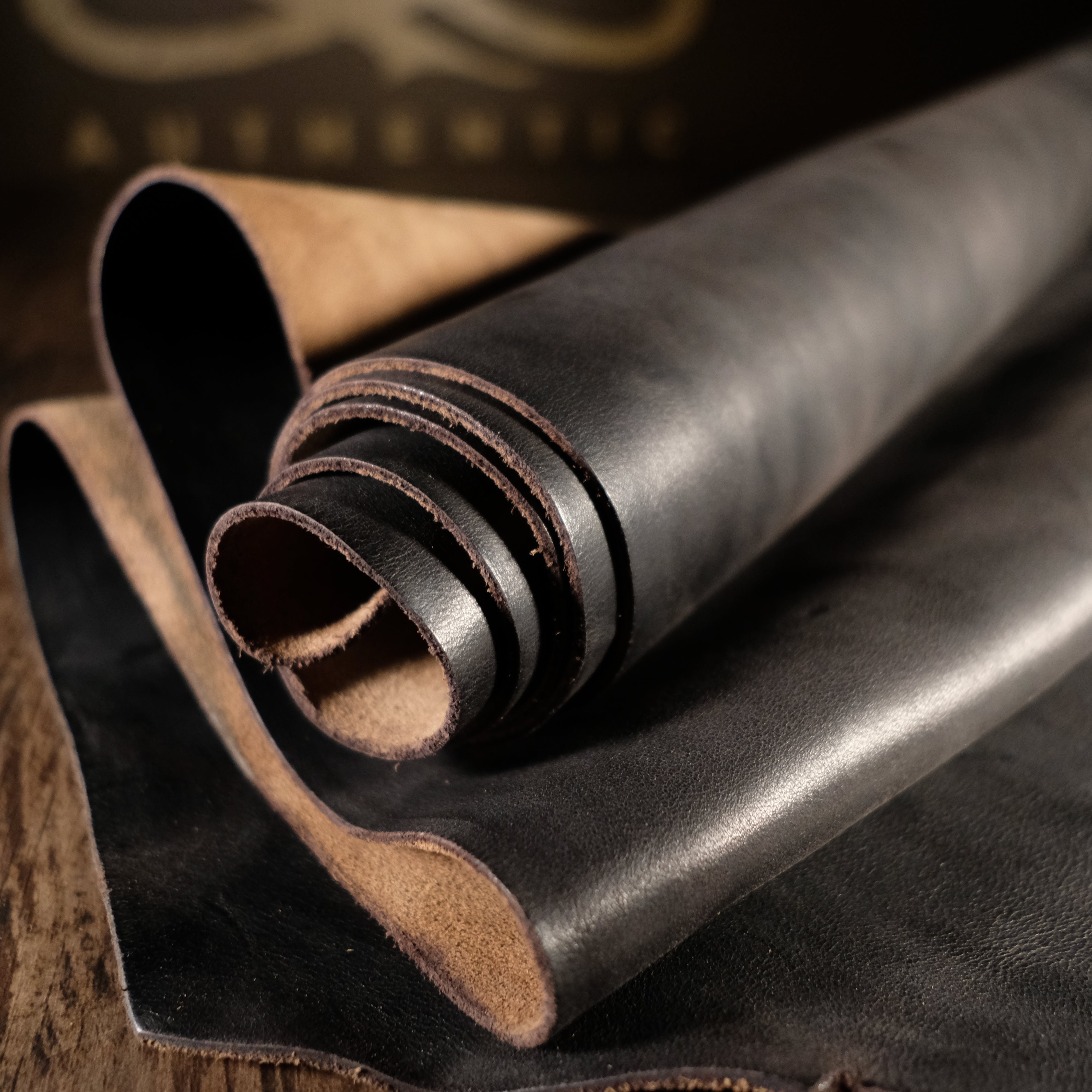
My personal pair of Lofgren Engineer Boots in black Chromexcel leather.
Spend enough time browsing reproduction leather jackets, boots, or belts, and you’re bound to come across the term “teacore.” No, it’s not a long-lost subgenre of British pensioner punk, it’s a type of leather. But what exactly does it mean?
The word "teacore" comes from the Japanese term 茶芯 (chashin), used to describe leather that’s brown and is then surface-dyed black. The character 茶 (cha) means “tea,” but also can mean the color brown. Meanwhile, 芯 (shin) means "core." So technically, “teacore” just means "brown core”—a more accurate translation might be "brown base"—but the nickname has stuck, and now it’s become its own thing in the heritage menswear world.
Why does teacore matter?
Some people dismiss teacore leather as just another overhyped hipster buzzword. Others treat it like divine mana, an unmatched gift from the leather gods. As with most things, the truth lies somewhere in between.
In the world of reproduction clothing, teacore is a lot like raw or one-wash denim: it’s meant to age with wear. You’re not just using it, you’re watching it evolve. Over time, the black dye wears away, revealing the brown core underneath and building what the heritage world calls “patina.” Technically, patina refers to the oxidized green film that forms on metal like bronze, but in this context, it’s taken on a second life, referring to the unique look leather develops through use and age.
Teacore leather also shows up frequently in vintage pieces we draw inspiration from. Many original garments from the early to mid-20th century used it. Take this example: a black leather barnstormer coat from the 1930s or ’40s:

You can see how the coat, which was originally black, has faded to reveal the leather's tan color underneath the black dye.
Here's another example, my personal Codina Leather belt made from black Hermann Oak tooling teacore leather:

And here's my personal The Rite Stuff x Wild Frontier Goods ‘Blackburn’ belt in Shonan Benz leather that’s been surface hand-dyed black with sumi ink:

Now think back to most black leather items you’ve bought over the past few decades at a typical store or mall: were any of them teacore? Probably not. Most were likely drum-dyed black, meaning the leather was tumbled in a drum with dye that penetrated all the way through.
When drum-dyed leather ages or scuffs, it doesn’t reveal a warm brown core. Instead, it tends to show a flat grey, green-grey, or murky grey-brown instead. That color is often the result of chrome tanning and the drum dye process. In other words, it’s not just the surface that’s black, it’s the entire hide, through and through.
For example, look at the leather on this 1980s or '90s Schott Perfecto:

Also, note how the edge of the leather pull tab on the zipper is not brown but grey.
Now, was all vintage black leather teacore? No, but it was more commonly found in jackets and boots, say, pre-1960s.
Zen and the art of leather appreciation
Another reason why teacore has become so common in the denimhead world, I believe, is that it relates to the Japanese concept of wabi-sabi (侘寂), or loosely translated, “subdued, austere beauty” and “rustic patina”. This concept relates to the Buddhist teaching of the “three marks of existence”, or “impermanence”, “suffering/dissatisfaction/unease”, and “without a lasting essence.”
Wabi-sabi aesthetics are generally characterized by a rough, rustic, and austere appearance that is meant to invoke serene melancholy and contemplation in the viewer as they ponder the fleeting nature of their existence. This, in turn, helps them on their path to enlightenment.
For example, here's an example of wabi-sabi in the renowned rock garden at the Ryoan-ji Temple in Kyoto, Japan, when I visited it in 2015:

The clay wall, which is stained by age with subtle brown and orange tones, reflects "sabi" and the rock garden represents "wabi", according to Morigami Shouyo in his book "侘び然び幽玄のこころ" (The heart of wabi-sabi and yugen).
Or this white raku teabowl, 'Fuji-san' (Mount Fuji) by Honami Kōetsu, from the Edo period, 17th century, a Japanese National Treasure:

Now, taken from a purely context-free perspective, there’s also something to be said for black and tan color contrast as an aesthetic as well:

Who offers teacore leather?

Horween tumbled black Chromexcel leather, image courtesy of OA Leather.
Although teacore leather seemed to fade from the mainstream in recent decades, some tanneries never stopped producing it. Others have brought it back in response to renewed interest from heritage enthusiasts and leatherworkers alike. Today, some of the most well-known black teacore leathers include:
-
Horween Chromexcel
-
Hermann Oak bridle and tooling leather
-
Shinki Hikaku front quarter horsehide
-
Shinki Hikaku horsebutt
-
Shinki Hikaku latigo
-
Bill Kelso Liberty horsehide
-
SB Foot Black Klondike and Prairie leathers
Of course, some leather artisans, such as Mike and Noriko at Wild Frontier Goods, also create their versions by hand-dyeing natural or brown leather with a black top coat to achieve that signature wear-over-time look.
So the next time you see teacore leather mentioned online and wonder what the fuss is about, now you’ve got the essentials. It’s not hype: it’s history, craft, and character, all rolled into one.
